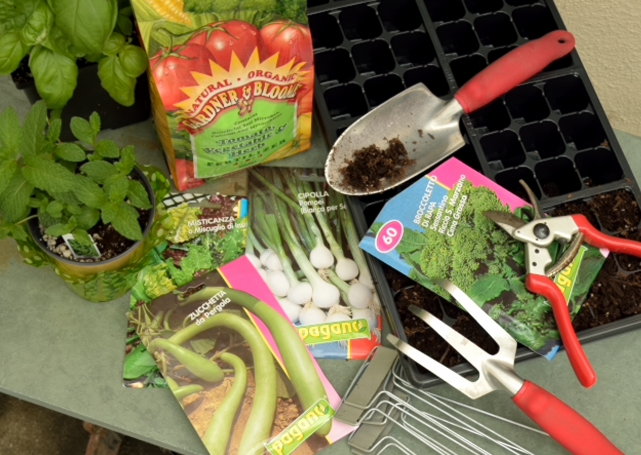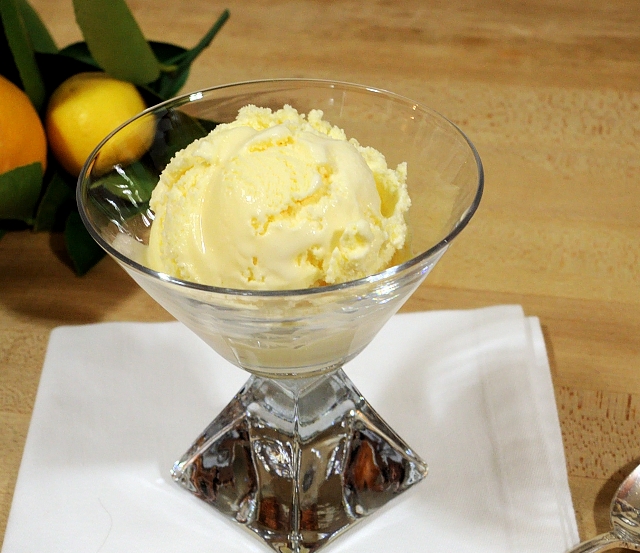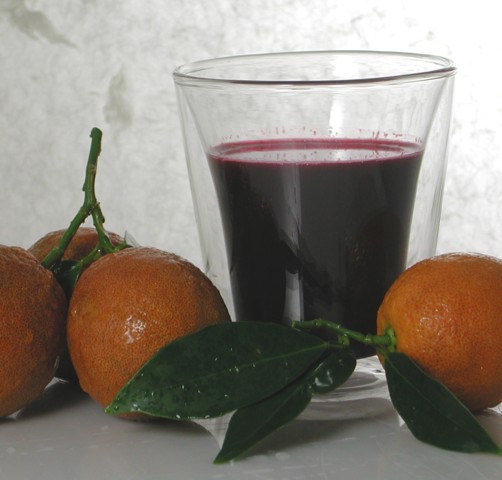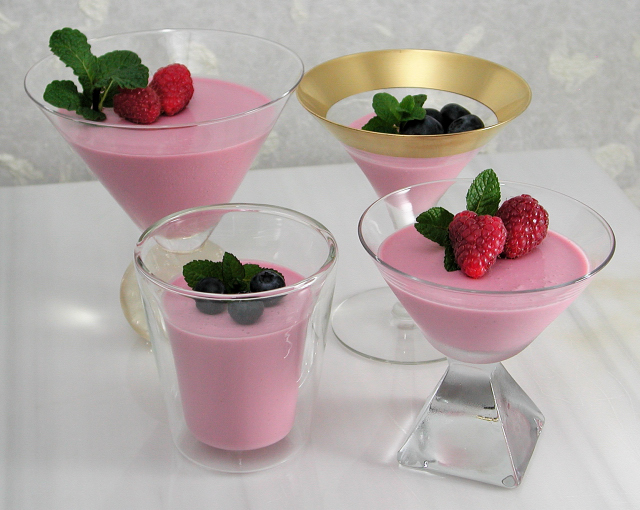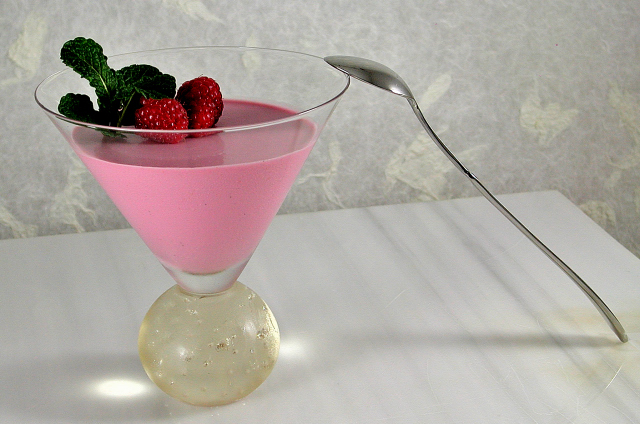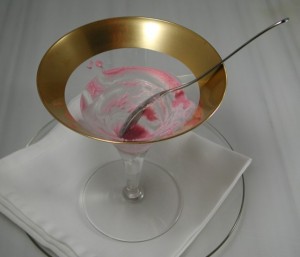Topic Index
The font size for a topic word is sized by the number of articles that reference that topic. The more articles the bigger the font.
Click on a word to search for posts with that topic. This page will reload with the search results.
Plan Your Italian Garden!
Homegrown is alright with me.
It’s never too early to plan a garden, and these days, with all the info on the Internet and all the mail order catalogs there is plenty to sift through. In just a few weeks it will be time to actually plant. Now is the time to do a little research.
Sure, if you are not in Italy, then you do not have the exact microclimate to grow a particular Italian vegetable or fruit. You do not have Italy’s indigenous soil either. But I am not going to quibble, and I am not going to let the purists stop me from growing my own, and neither should you. What greater joy is there than to walk into the garden with an empty trug and return to the kitchen, the trug brimming with fruits and vegetables grown with one’s own two hands, one’s own sweat and toil.
Don’t miss the thrill of seeing the tiny sprouting plants lift the dark, rich soil. Read the remainder of this entry »
Meyer Lemon Gelato
‘Tis the season. Yes, winter citrus season is at its height now. Blood oranges and Meyer lemons abound. My trees are heavy with the fruit, and I just can’t get enough of it. Although it was cold here in Los Angeles today, a few days ago it was warm, and I wanted some gelato. Meyer lemon gelato, to be specific. Read the remainder of this entry »
Corzetti: The Intagliatore of Chiavari

This is Part 2 of a series – The Corzetti Files
For detailed information and photo essays on how to make corzetti, along with recipes, please delve further into The Corzetti Files:
Edible Art, The Corzetti Files – Part 1
The Intagliatore of Chiavari, The Corzetti Files – Part 2
Corzetti agli Spinaci con Gorgonzola, The Corzetti Files – Part 3
Where to Buy Corzetti Stamps, The Corzetti Files – Part 4
Corzetti Stampati – and a Giveaway! The Corzetti Files – Part 5
A Gold Coin
 The pasta we know as Corzetti started with a gold coin, the Genovino d’oro. Rome had fallen, and the curtain of The Dark Ages had descended over western Europe. Trade has fueled society for centuries, and it is trade that brought gold coins and light back to western Europe. The gold came across the Sahara from north Africa and Genoa’s harbor assured her of preeminent mercantile stature. King Conrad granted Genoa the right to mint her own gold coinage in 1252, and these pieces of almost pure gold summon up the history and wealth of The Most Serene Republic of Genoa.
The pasta we know as Corzetti started with a gold coin, the Genovino d’oro. Rome had fallen, and the curtain of The Dark Ages had descended over western Europe. Trade has fueled society for centuries, and it is trade that brought gold coins and light back to western Europe. The gold came across the Sahara from north Africa and Genoa’s harbor assured her of preeminent mercantile stature. King Conrad granted Genoa the right to mint her own gold coinage in 1252, and these pieces of almost pure gold summon up the history and wealth of The Most Serene Republic of Genoa.
 Coming in at about 3.5 grams, the earliest of these coins feature the city gate and to honor King Conrad and his participation in the Crusades, a Crusader cross on the reverse. The coins are covered with a beautiful relief. One of the most famous coins honors the first Doge of Genoa, Simone Boccanegra, and later coins honor subsequent families and Doges. Today one must visit a museum or be fortunate enough to know a collector to view these coins, but with Liguria’s gift to the world of the pasta known as corzetti stampati (kohr-TSEHT-tee stahm-PAH-tee), the legacy of these glorious coins is alive and well and available to us all.
Coming in at about 3.5 grams, the earliest of these coins feature the city gate and to honor King Conrad and his participation in the Crusades, a Crusader cross on the reverse. The coins are covered with a beautiful relief. One of the most famous coins honors the first Doge of Genoa, Simone Boccanegra, and later coins honor subsequent families and Doges. Today one must visit a museum or be fortunate enough to know a collector to view these coins, but with Liguria’s gift to the world of the pasta known as corzetti stampati (kohr-TSEHT-tee stahm-PAH-tee), the legacy of these glorious coins is alive and well and available to us all.
A Piece of Wood
I have an ongoing love affair with handmade pasta, and this one captivated me from the start. Imagine my delight when I discovered its history, how it was made, and that I could do it at home. All I needed was a corzetti stamp, the two piece tool that cuts and imprints the pasta. By the way, you may come across pasta in shops, in recipes or on menus called croxetti, crosetti or curzetti – these are all names for corzetti. Read the remainder of this entry »
Blood Orange Panna Cotta
So dramatic. So exotic. Winter in Sicily. Breakfast in the finest hotel. I am talking about blood oranges, Moro blood oranges in particular. Does any citrus make such a statement? This fruit will have you seeing red.
Cut a Moro open and see brilliant crimson throughout. Juice it and see an opaque liquid as dark as blood. Drink it and experience the marriage of orange with a hint of raspberry over a pedal point of tartness.
This is orange juice for adults. I figured that the juice, along with being a magnificent drink on its own, would be an unbeatable component in panna cotta. There are several kinds of blood oranges – Moro, Tarocco and Sanguinello being the most common. Although they all ripen in winter, the Moros ripen first and are at their peak right now. You can find them in Farmer’s Markets and many supermarkets these days. Lucky me, I find them in my back yard. I love my blood orange trees, but the Moro is my favorite – especially at this time of year. It is a wildly productive tree and now its branches are heavy with a medium sized fruit. The skin is quite rough and sports an enticing crimson blush. And, thank you Mother Nature, Moros are virtually seedless. If you would like your own blood orange tree, check out Four Winds Growers, a great source for hard to find citrus.
Let’s get to the recipe – for a step by step discussion of Panna Cotta and the proper use of gelatin, take a look at my recipe for Espresso Panna Cotta. You will find lots of explanations and photos there. I cooked up several versions – all cream, cream and milk, more milk than cream – more gelatin – less gelatin. I settled on 1 cup of cream and ½ cup of milk. All cream and the dessert was undeniably voluptuous, but the orange flavor was somehow masked, muted, while the 2 to 1 cream to milk ratio allowed for a pleasant creaminess and a startlingly clean orange flavor. I settled on 1 teaspoon of gelatin to allow for a softer set. If you prefer a firm set, go ahead and increase the gelatin to 1 1/4 teaspoons. This panna cotta is something of a trickster – its dusky rose hue belies a bright clean orange flavor. So get busy, find some Moro blood oranges, or any other variety, and make some Panna Cotta. A word about the choice of oranges. Not all blood oranges are created equal. Moros are much darker than the other varieties, so if you use Sanguinellos or Taroccos, your Panna Cotta will take on a lighter hue. The varieties vary in sweetness, you may have to adjust the sugar.
Blood Orange Panna Cotta
makes 4 servings, ½ cup each
1 cup heavy cream
1/2 cup whole milk
1/2 cup blood orange juice, preferably Moro
1/4 cup sugar
1 teaspoon gelatin
fresh berries and mint to garnish
Combine heavy cream, milk and sugar in medium sauce pan. Over medium heat, stir to combine and dissolve the sugar. Heat to scalding. Remove from heat. Meanwhile pour orange juice in small bowl and sprinkle gelatin over it. Set aside for 5 minutes to allow to soften. After gelatin has softened, pour the orange juice mixture into the scalded cream, stirring to combine thoroughly and dissolve gelatin. Pour through a fine strainer into a clean bowl. Place bowl over ice bath, stirring often to cool uniformly. Transfer mixture into serving glasses. Cover with plastic wrap and refrigerate at least 2 hours or overnight, until ready to serve. When ready to serve top panna cotta with fresh berries and mint.
Note: You can click on any picture to see a slide show!
